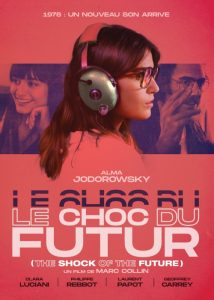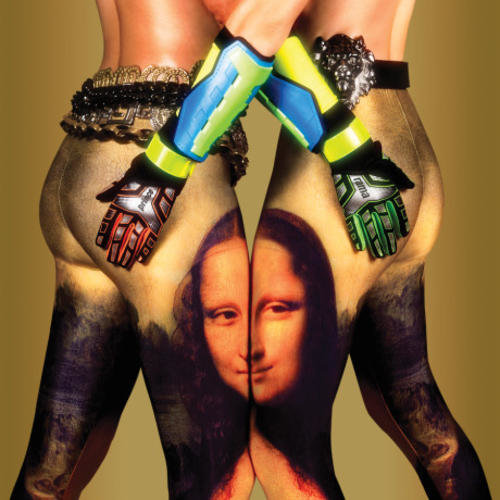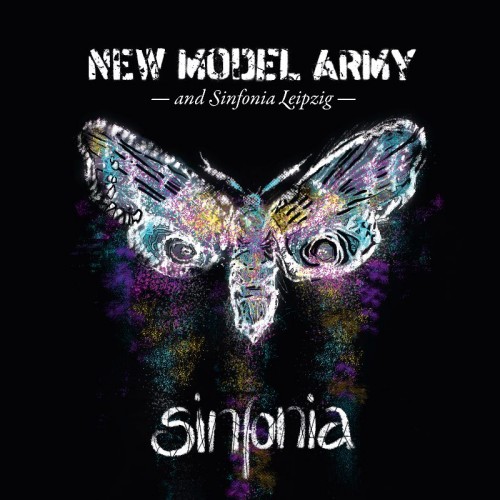 Nouvelle Vague‘s Marc Collin adopts a fly-on-the-wall approach with Le Choc du Futur to transport you back in time to a synthetic studio in 1978, peeling back the years to remind us why electronic music truly matters.
Nouvelle Vague‘s Marc Collin adopts a fly-on-the-wall approach with Le Choc du Futur to transport you back in time to a synthetic studio in 1978, peeling back the years to remind us why electronic music truly matters.
It’s difficult, if not perhaps impossible, to truly maintain a perspective on the past, especially in regards to technology. Technology that is now commonplace, like holographic projectors or virtual reality, could have seemed like something out of The Jetsons or Back To The Future 2 not even ten years ago. It’s easy to forget how truly revolutionary some technological innovations were, especially in music. French director and musician Marc Collins sets out to remedy that with Le Choc du Futur, or The Shock Of The Future, a cinematic time machine back to the year of our lord 1978.
Le Choc du Futur follows Ana — played by Amma Jorodowsky, daughter of Alejandro — through a single day of a struggling up-and-coming synth musician. Living in a borrowed studio featuring a monolithic floor-to-ceiling modular synth, she’s struggling to complete a commission, presumably for a brand of press-on nails. Troubles with her CV summon Hervé (Teddy Melis), who just so happens to be sporting the latest in electronic music technology, a Roland CR-78 beatbox, which proves to be the missing link in Ama’s signal chain, sparking her own “Eureka!” moment and forcing drastic action.Suddenly inspired, Ama can’t bring herself to complete the banal jingle for which she’d already accepted payment from the sleazy Jean-Mi (Philippe Rebbot), the quintessential rock ‘n’roll dinosaur. He demands his money back, causing Ana to call in a loan from Duncan (Geoffrey Carey), a good-natured artist friend who believes in Ana and her music. He says he’ll bring it to that evening’s party, where several music industry bigwigs will be in attendance.
The party serves as the crown jewel of Le Choc du Futur’s admittedly light plot. Ama had invited a number of industry movers-and-shakers to unveil some of her recent creations, after toiling away in solitude for six months. That afternoon, she experiences a breakthrough when a singer, Clara (Clara Luciano), shows up on her doorstep. She’d initially been hired to sing the jingle. Instead, she stays over for coffee where Ama plays her some of her music. Inspired, Clara jots some quick verses and they quickly lay down some spacey post-disco vocals. Then they smoke spliffs and watch surreal French animation on TV. Plotwise, that’s about it for Le Choc du Futur. Suffice it to say, and speaking plainly, if yr looking for high-octane action or cinematic thrills, if you’re bored by dialogue-driven films or don’t care about either history or electronic music, do yourself a favour and miss this. There are joys and treasures and revelations and, most precious of all, real heart for those who care to look for it, however.Le Choc du Futur takes you back to a time when music really mattered. When someone would turn down a thousand pounds because they just couldn’t bring themselves to churn out the bullshit. And with electronic music and technology being so omnipresent in our daily lives, it’s hard to remember, let alone feel, how truly revolutionary electronic music was when it was first emerging; how violent and combustible the clashes between the old and the new; between human and machine were, with the rallying cry of “Disco sucks!” summing up the testosterone-dripping phobia of the rockers, causing Fahrenheit 451 bonfires that even the tsk-tsking parents and squares of the 1950s might’ve found too extreme.
Le Choc du Futur also gives a much-appreciated look at the role and influence that women played in the genre’s evolution, with a laundry list of innovators listed and credited at the end in homage and thanks. Some reviewers felt that the gender issues were under-played or a missed opportunity. Collins does touch on some of the challenges particular to women electronic musicians and producers, like being asked for kisses in exchange for gear or told that they should be singers because they have a pretty face. It’s not the sole point of the movie, however, which rings true to the androgynous potential of electronic music. This is emphasised with the film’s cinematography, which lingers wistfully over knobs and sequencers instead of flesh.All in all, Le Choc du Futur serves as both a time capsule and time machine. 99% of the movie takes place inside Ana’s studio / apartment, practically spinning out in real-time. Seeing Ana’s passion for electronic music — drooling over new records her friend brings over, the endless possibilities of a rhythm-synced synthesizer, the possibilities of disco music played by musicians, will remind you why you cared about electronic music in the first place. Or it will make you care, if you didn’t already, if you take its journey and truly listen.
-J Simpson-



